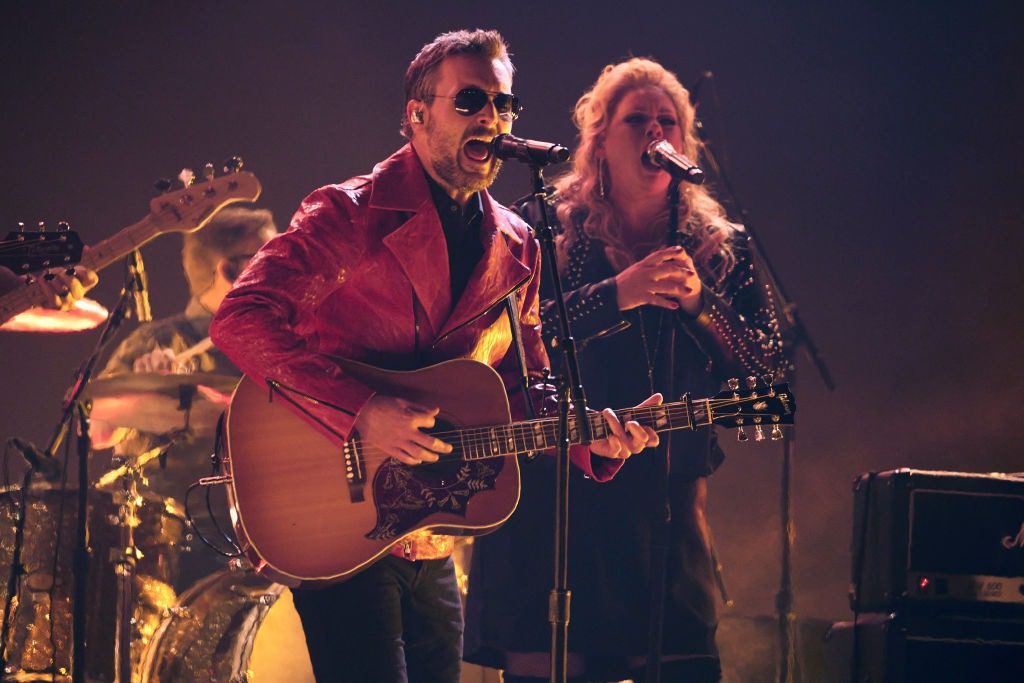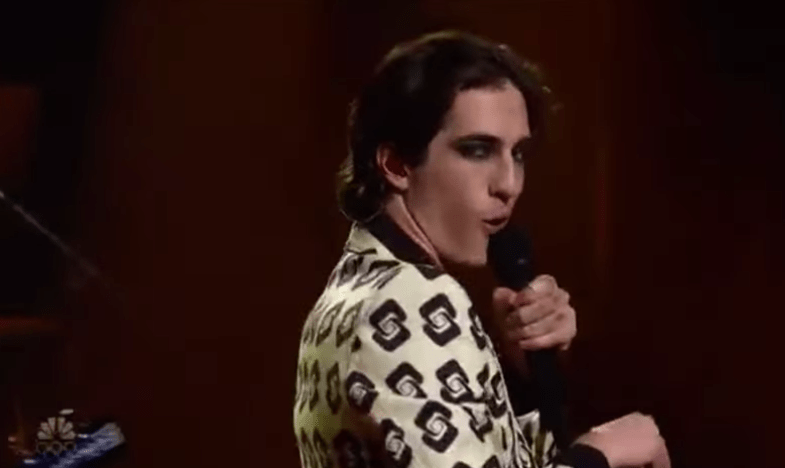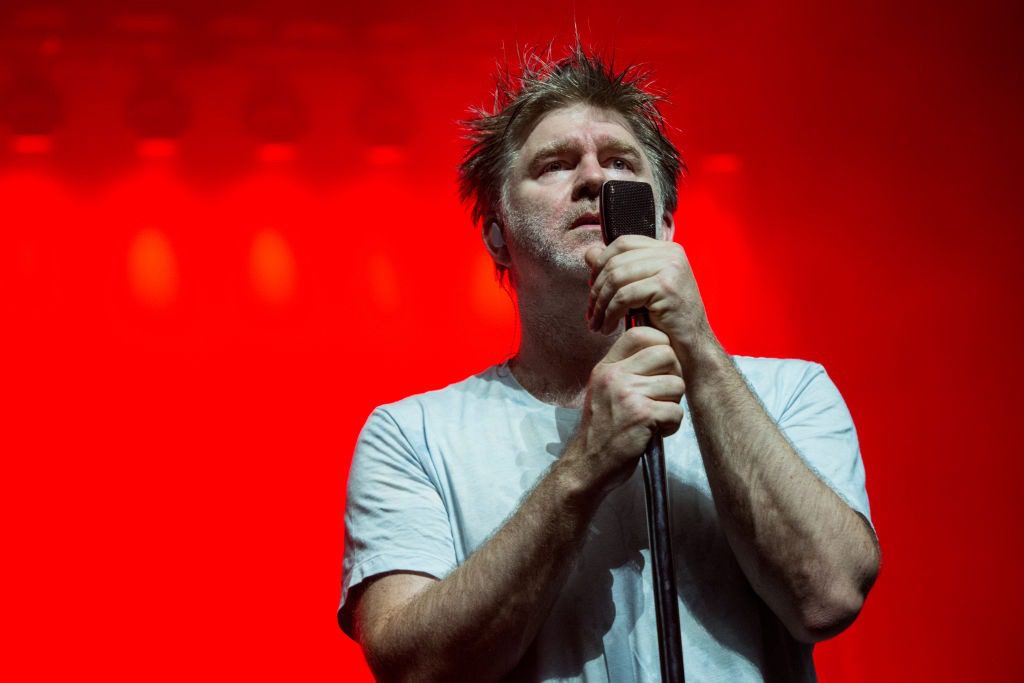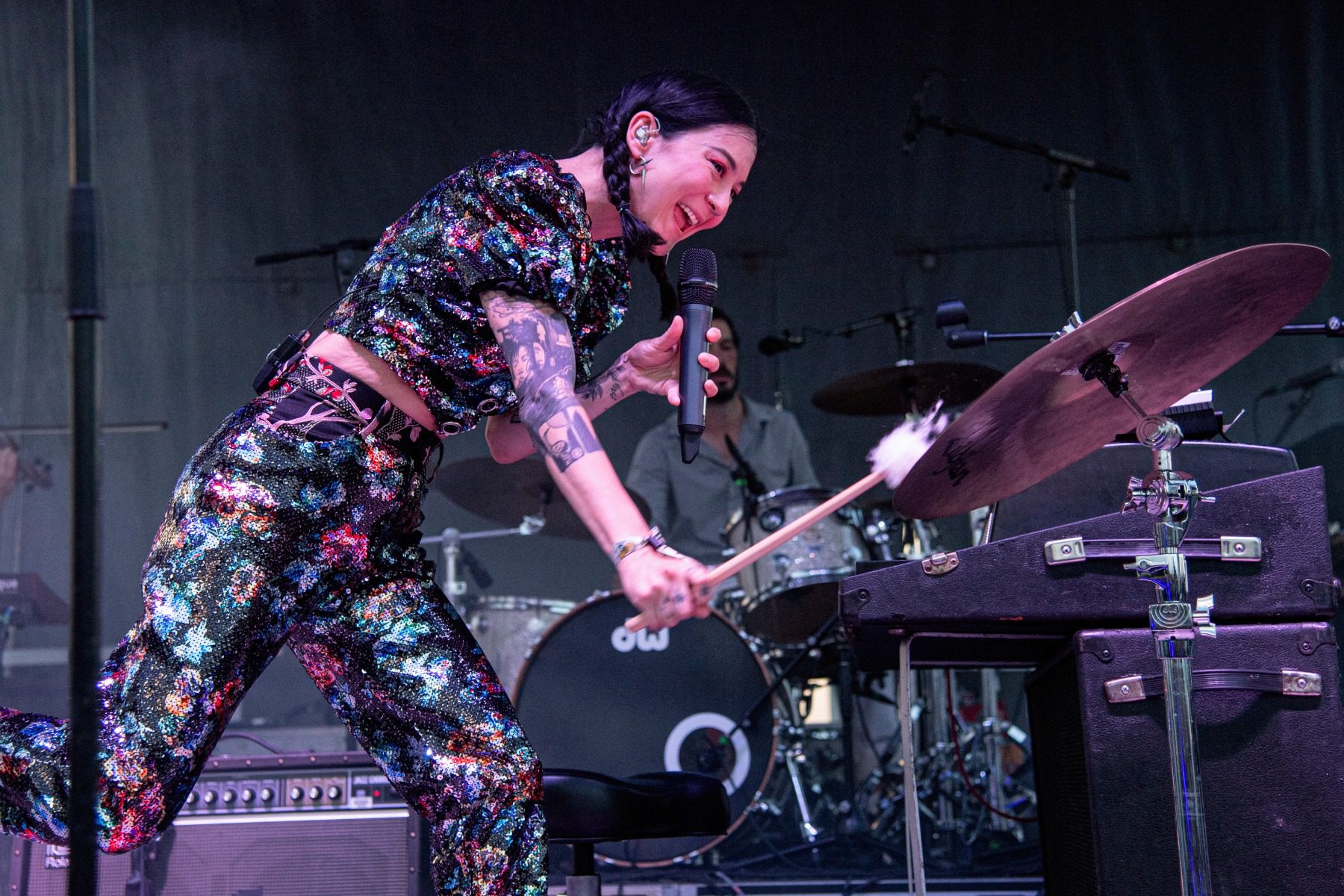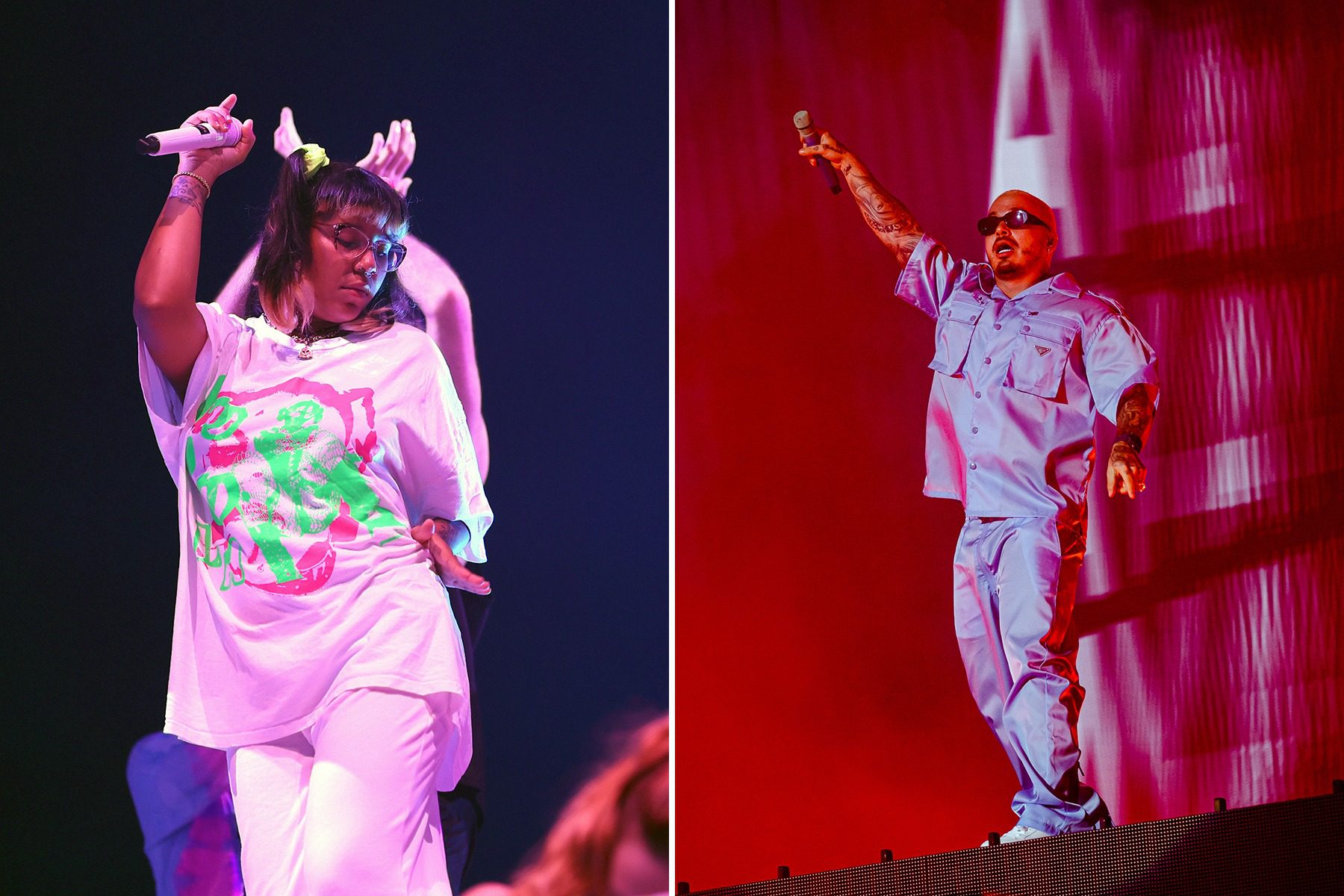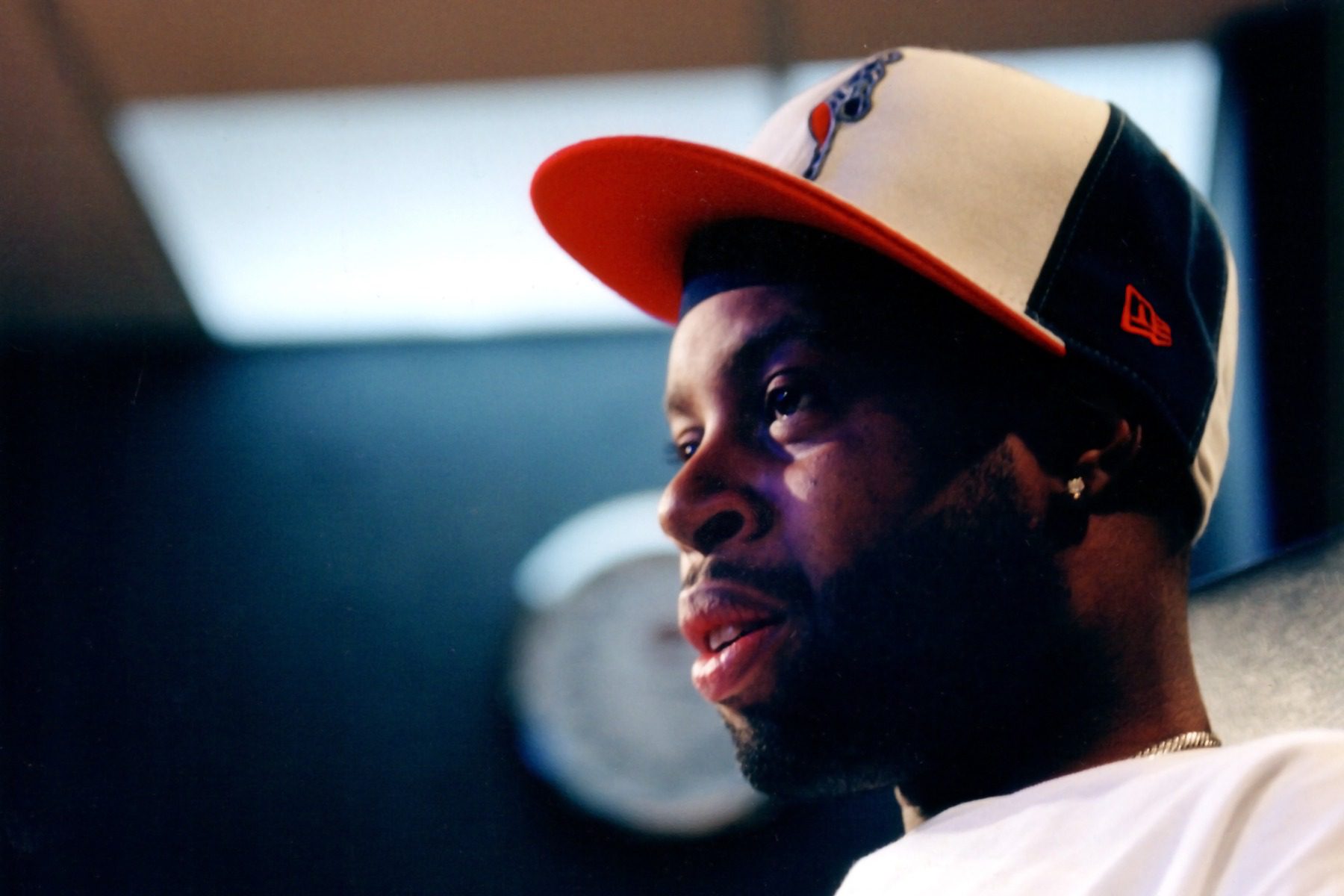
How J Dilla Reinvented Rhythm
It’s the late 1990s. James Dewitt Yancey — known as Jay Dee, and later as J Dilla — was already a well-known hip-hop beatmaker, working on records by A Tribe Called Quest, Busta Rhymes, De La Soul, and The Pharcyde as part of a production collective called the Ummah, started by his mentor Q-Tip. But Yancey’s music was going through a bizarre transformation. The rhythms he was generating on his MPC drum machine had started to “limp,” fusing straight and swung grooves into a revolutionary new sonic language. Within a couple of years, Dilla’s digital broken beats would permeate hip-hop, R&B, and pop; and more important, be adopted by a generation of traditional musicians.
Dilla, who died in 2006, has become an iconic figure in rap history. In the following excerpt from Dan Charnas’ excellent new book, Dilla Time: The Life and Afterlife of J Dilla, the Hip-Hop Producer Who Reinvented Rhythm (MacMillan, out Feb. 1), the author tells the story of how Jay Dee’s “Dilla Time” rhythm made the leap from machines to humans, and how he and collaborators like D’Angelo, Questlove, Common, and Erykah Badu came together in New York to found a world-changing musical community called the Soulquarians.
blogherads.adq.push(function () {
blogherads
.defineSlot( ‘medrec’, ‘gpt-dsk-tab-article-inbody1-uid0’ )
.setTargeting( ‘pos’, [“mid-article”,”mid”,”in-article1″,”mid-article1″] )
.setSubAdUnitPath(“music//article//inbody1”)
.addSize([[300,250],[620,350],[2,2],[3,3],[2,4],[4,2],[640,250]])
;
});
PARTNERS
D’Angelo’s star rose with his first album in 1995. After three turns around the sun, his long-awaited follow-up had yet to break the horizon. He lingered in a place beyond time, searching for something that had been lost: the sound of soul music before the machines took over.
D’Angelo’s partner Q-Tip had embarked on this quest with Tribe back in 1990, when they created “Bonita Applebum,” sampling pieces of a Fender Rhodes keyboard lifted from the RAMP song “Daylight.” The warm, tubular tones of the Rhodes electric piano embodied the seventies soul sound. Then, in the 1980s, they were replaced by the cooler sonics of synthesizers; and the subtle grooves of human drummers gave way to the rigid grid of machines. Just as hip-hop producers used drum breaks from the 1970s to break free of that grid and impart some human groove to their compositions, A Tribe Called Quest’s great innovation was to revive the harmonic complexity and sonics of that decade by using samplers and sequencers rather than traditional instruments. D’Angelo traced his own epiphany as a programmer to Tribe’s second album, Low End Theory: in the right hands, he realized, machines could evoke soul, too.
D’Angelo could use both traditional and digital skills in his resurrections. He thought deeply about the placements of notes—a little ahead, a little behind, what those shifts felt like—and about how humans and machines worked together. Even so, he wasn’t satisfied with the sound of his first album. Brown Sugar felt thin compared to, say, Stevie Wonder’s Music of My Mind. New records tended not to sound like old records, because new records were made on newer, ostensibly better equipment that didn’t really sound better. D’Angelo had recorded his first album at the modern Battery Studios where the Ummah produced their music. For his follow-up, D’Angelo wanted a record that sounded less polished—to hear human mistakes, to hear the room itself. So he decamped in late 1996 to a neglected studio where time had stopped: Electric Lady, built by Jimi Hendrix, tucked into a tiny building on Eighth Street in Greenwich Village, on a block known for shoe shops, not show business. But Electric Lady was where many of the records that inspired the hip-hop generation were recorded.
blogherads.adq.push(function () {
blogherads
.defineSlot( ‘medrec’, ‘gpt-dsk-tab-article-inbody2-uid1’ )
.setTargeting( ‘pos’, [“mid-article2″,”mid”,”in-article2″,”mid-article”] )
.setSubAdUnitPath(“music//article//inbody2”)
.addSize([[300,250],[300,251],[620,350],[2,4],[4,2],[3,3],[2,2]])
.setLazyLoadMultiplier(2)
;
});
The two biggest rooms of the three-studio complex were underground. In the control rooms, the equipment was powered by tubes and transistors rather than microchips. Walking into the control room of Studio A for the first time, D’Angelo touched the old Focusrite board and felt the spirits. Through the glass, in the spacious, oval-shaped wood-paneled live room of Studio A, sat a dusty Fender Rhodes keyboard. Not just any Fender Rhodes. The Fender Rhodes—the Holy of Holies, the one that created the sound of modern soul music; the same one that Stevie Wonder played on his greatest albums, the same one that RAMP employed on “Daylight,” and, by extension, on “Bonita Applebum,” the song that launched the aesthetic for Tribe, the Ummah, and D’Angelo himself. Electric Lady was the mother, the matron, the matrix of the very sound they sought. Deeper still, beneath the floorboards, ran the Minetta Creek, the buried watercourse of ancient Manhattan. For an old soul like D’Angelo, this was like coming home to a place he’d never been, a sacred place to commune with his ancestors.
Every evening at Electric Lady was a séance in which D’Angelo was assisted by two sonic shamans. Behind the boards sat Russ Elevado, an engineer who shared D’Angelo’s aesthetic pursuits. Accompanying D’Angelo in the live room was Roots drummer Ahmir “Questlove” Thompson. They began each evening around 6:00 p.m. To charge themselves, they’d listen for hours to records, old and new, or watch Questlove’s “treats”— videotapes from his collection of hundreds: old episodes of Soul Train, bootlegs of concerts by Marvin Gaye, Stevie Wonder, Hendrix, Al Green, Michael Jackson, and Prince. Then, as the clock nudged toward 10:00 p.m., D’Angelo and Questlove moved into Studio A’s live room. Often they’d spend hours re-creating the performances they’d watched or albums they listened to. When they found a particular groove, they’d follow where it took them. Elevado and his assistant Steve Mandel recorded their jam sessions to reel after reel of two-inch multitrack tape. Sometimes they found an element or an idea that then became the germ of a song, and they’d expand it. They’d work all night and leave the studio at dawn. It was a freedom that was also deep study, deep practice, funded by the deep pockets of EMI: two years, one million dollars, and counting.
blogherads.adq.push(function () {
blogherads
.defineSlot( ‘medrec’, ‘gpt-dsk-tab-inbodyX-uid2’ )
.setTargeting( ‘pos’, [“mid”,”mid-articleX”,”in-articleX”,”mid-article”] )
.setSubAdUnitPath(“music//article//inbodyX”)
.addSize([[300,250],[300,251],[3,3],[620,350],[2,2]])
.setLazyLoadMultiplier(2)
;
});

Questlove and D’Angelo were rebels against rigidity, their bond beginning on April Fools’ Day in 1996 at the House of Blues in Los Angeles: Questlove onstage with the Roots, and D’Angelo in the balcony. They’d never met, but Questlove was a fan. While the drummer had been disciplining his playing into a metronomic, machinelike pulse, D’Angelo was relaxing his rhythms; songs like “Dreamin’ Eyes of Mine” evoked the same feeling Questlove got when he listened to Jay Dee’s beats. So the drummer sent the singer a smoke signal, launching into the drum riff of an obscure song called “Four”—penned and recorded by Prince under his jazz alias, Madhouse—elongating time, hitting the skins with a contained sloppiness. D’Angelo caught the beat, bobbing his head wildly. Their introduction after the show led to D’Angelo’s first collaboration with the Roots, and to a friendship.
That evening at the House of Blues birthed another musical relationship. Next to D’Angelo sat a young performer from Dallas: Erica Wright, just signed by D’Angelo’s manager Kedar Massenburg’s new label. Quick-witted, with a deep gaze and an iron will, Wright was the kind of person who could be successful at anything she put her mind to doing; she’d already been a dancer, a rapper, and a comedian. What she chose, eventually, was a singing career under the name Erykah Badu. Like D’Angelo, she evoked the sounds of the past—the phrasing of Billie Holiday with the firepower of Chaka Khan; and she matched those classic aesthetics with hip-hop sensibilities. Kedar paired Badu initially with Bob Power, who coproduced what became her first successful single, “On & On,” but the singer specifically requested a collaboration with the Roots. Badu flew to Philadelphia in 1996, where she and the band drifted for a couple of days before Roots manager Richard Nichols phoned a local musician who could help them figure it all out.
James Poyser arrived soon thereafter. A self-taught keyboardist who’d been mentored by the two men most responsible for creating the classic “Philly soul” sound of the 1970s, Kenny Gamble and Leon Huff, Poyser sat down, “comped” out a few chords on a Fender Rhodes, and instantly transformed the mood in the room. Within an hour they had written a ballad, “Otherside of the Game.” Poyser and Erykah’s chemistry, backed by Questlove’s rhythmic physics, fleshed out Erykah Badu’s debut album in 1997, Baduizm, which in turn set a sonic goalpost for D’Angelo as he recorded his second album at Electric Lady.
blogherads.adq.push(function () {
blogherads
.defineSlot( ‘medrec’, ‘gpt-dsk-tab-inbodyX-uid3’ )
.setTargeting( ‘pos’, [“mid”,”mid-articleX”,”in-articleX”,”mid-article”] )
.setSubAdUnitPath(“music//article//inbodyX”)
.addSize([[300,250],[300,251],[3,3],[620,350],[2,2]])
.setLazyLoadMultiplier(2)
;
});
Neo-soul was the term Kedar Massenburg coined for the kind of music his two artists made. While much of popular R&B in the 1990s had devolved into singing over hip-hop beats, D’Angelo and Badu were among a small group of artists who strove to re-create the elements behind those beats—like that Electric Lady Rhodes—by using a combination of programming and traditional musicianship. Neo-soul was a revival of soul’s analog heyday by its digital children. D’Angelo and Erykah both detested the term, but neo-soul was a handy differentiator for fans and critics. Their music wasn’t simply the same as Stevie Wonder’s. The creators of neo-soul weren’t just emulating old stuff, they were reckoning with new ideas as well. The emphasis, if you listened carefully, was on the “neo.”
Foremost among those novel elements were the rhythms of James “Jay Dee” Yancey. D’Angelo was an early fan, and he’d tapped James to do a remix of his single “Dreaming Eyes of Mine,” one that EMI never released. But when Q-Tip played him Fan-Tas-Tic, D’Angelo lost his mind: Jay Dee’s “pocket” was so reminiscent of his own, and he had done it all on a machine. He loved the way the second side of the cassette was virtually a remix of the first side. All that made Fan-Tas-Tic essential daily listening for D’Angelo while he recorded. Then he began listening to the tracks that would end up on Fantastic, Vol 2.
In the same way that they studied Prince’s work and techniques, D’Angelo and Questlove analyzed the music of the electronic producer from Detroit, asking the same question they asked of any of the artists they revered: What the fuck is he doing? In their Electric Lady jam sessions, they re-created his uncannily disjointed machine rhythms on drums and keys, and recorded them to tape.
Playing these rhythms on traditional instruments required a new kind of musicianship. Re-creating the inner tension of a Jay Dee beat was difficult to do alone, and trickier to do in concert with others. The first time bassist Pino Palladino joined D’Angelo’s sessions, D asked Pino to lag behind the beat, as he was doing on keys. The problem was that Questlove’s instinct on the drums was to slide back with them. You can’t play behind a beat that won’t stay ahead of you, so D’Angelo told Questlove to take his headphones off—so that he couldn’t hear him and Pino—and just play as straight as possible, preserving the tension. Eventually, Questlove could put his headphones on again and stay glued to the imaginary grid, even when D and Pino further exaggerated their pull against it.
blogherads.adq.push(function () {
blogherads
.defineSlot( ‘medrec’, ‘gpt-dsk-tab-inbodyX-uid4’ )
.setTargeting( ‘pos’, [“mid”,”mid-articleX”,”in-articleX”,”mid-article”] )
.setSubAdUnitPath(“music//article//inbodyX”)
.addSize([[300,250],[300,251],[3,3],[620,350],[2,2]])
.setLazyLoadMultiplier(2)
;
});
Questlove developed tricks to bring more conflict into his own playing. To re-create the exaggerated “flamming” of Jay Dee’s production in Fan-Tas-Tic, he borrowed a technique used by Prince in his song “Under the Cherry Moon” and by drummer Quinton Joseph, most prominently on Curtis Mayfield’s 1974 song “Mother’s Son.” Instead of merely hitting the snare, Questlove angled his drumstick so that it struck the edge of the skin and then the metal rim in rapid succession. D’Angelo loved the style, and Questlove used it regularly. It even sounded like its namesake, the second strike hiding just behind the skirts of the first: mother-son, mother-son, mother-son.
To get the rushed snare of the beats from the as-yet-unreleased Fantastic, Vol. 2, Questlove trained himself to let his drumstick fall on the snare just slightly too soon after the kick drum. In this way, Questlove could shift the snare while the kick and hats kept the overall beat steady.
Jay Dee could shift a drum’s position in time by programming it, and there it would remain. But Questlove had to counteract a lifetime of physical reflexes, to retrain his body to do things and feel time differently. So much of the work was mental: playing a rhythm in 12/8 but thinking about it as 4/4; the thought itself could make the difference. He was grateful now for his drum teacher Jules Benner who, when Ahmir was ten years old, told him, “I’m going to teach you how to divide your mind,” and then made him practice an infernal exercise—playing in fours with his feet and in threes with his hands for endless minutes while Benner read the paper and smoked his pipe. Ahmir remembered thinking it was a waste of time: I am never going to use this in real life. If only Benner could see him now.

Slum Village in 2000
Gregory Bojorquez/Getty Images
The caliber of musicians that D’Angelo invited to his project was atypical for 1990s R&B: Charlie Hunter, a virtuoso of bizarre seven- and eight-stringed instruments, which allowed him to play bass and guitar parts simultaneously; Roy Hargrove, a trumpet player who’d gone to high school in Dallas with Erykah Badu and then gone on to rock the jazz world. These players came with formidable skills and experience. They understood the lexicon of swing from Louis Armstrong to Elvin Jones. But each entered new territory at the bidding of D’Angelo— inspired by Jay Dee and his own rap group Slum Village—putting themselves in degrees of rhythmic conflict with each other.
blogherads.adq.push(function () {
blogherads
.defineSlot( ‘medrec’, ‘gpt-dsk-tab-inbodyX-uid5’ )
.setTargeting( ‘pos’, [“mid”,”mid-articleX”,”in-articleX”,”mid-article”] )
.setSubAdUnitPath(“music//article//inbodyX”)
.addSize([[300,250],[300,251],[3,3],[620,350],[2,2]])
.setLazyLoadMultiplier(2)
;
});
As he assisted in session after endless session, the engineer Steve Mandel not only heard this alternative time-feel, he began to see it in the varied head-nods of the musicians. Questlove and Pino had their own distinct way of moving their heads while they played. D’Angelo’s nod was so far behind the beat as to seem completely disconnected from it, a movement that Mandel ruefully compared to his own, suburban-Jewish-boy-right-on-the-beat stiff. I’m stealing that head-nod, Mandel thought.
The critical mass at Electric Lady continued its gravitational pull. With Questlove came the Roots and James Poyser, with Poyser came Badu. Bilal Oliver, a singer from Philadelphia who had attended jam sessions in Questlove’s living room with other emerging Philly singers like Jill Scott, now lived in a dormitory across the street from Electric Lady while he studied jazz at the New School; he came through, as did art-minded New York hip-hop artists like Mos Def, Talib Kweli, and Q-Tip, who still maintained a creative connection with D’Angelo even as the singer drifted away from the Ummah. And then there was the MC from Chicago who had become an honorary member of the collective.
Lonnie Rashid Lynn was one of the few rappers to make it out of the Midwest in the early 1990s, a time when hip-hop’s most important acts emerged from either the East or West Coasts. Performing as Common Sense, his demo tape had been discovered by the leading hip-hop magazine, The Source, and the coverage landed him a record deal from the New York–based independent label Relativity. His success was relative: though Common Sense was embraced by the Native Tongues groups, their level of record sales and tour receipts eluded him. Though he was known for skillful, candid lyrics, his biggest moment was a back-and-forth war of words with the rapper Ice Cube that ended with an armistice brokered by Nation of Islam Minister Louis Farrakhan. He even had to change his name when a band called Common Sense pursued him for trademark violation; he became thereafter simply Common. In 1997 he released an album that he believed would be his breakthrough. One Day It’ll All Make Sense had all the ingredients for success: songs with Q-Tip and De La Soul, Questlove and the Roots, James Poyser and Erykah Badu, and a duet with Lauryn Hill. But even with name recognition, famous friends, and great singles, Common’s album never cracked the top ten or merited a gold record award.
blogherads.adq.push(function () {
blogherads
.defineSlot( ‘medrec’, ‘gpt-dsk-tab-inbodyX-uid6’ )
.setTargeting( ‘pos’, [“mid”,”mid-articleX”,”in-articleX”,”mid-article”] )
.setSubAdUnitPath(“music//article//inbodyX”)
.addSize([[300,250],[300,251],[3,3],[620,350],[2,2]])
.setLazyLoadMultiplier(2)
;
});
Questlove and the Roots’ manager Rich Nichols saw something special in Common, someone who could play a greater role in their grand project: a commercially viable, soulful countermovement to mainstream R&B and hip-hop, which had become ever more success-oriented and aggressively consumerist, with videos full of flashy cars and shiny suits. In the same way that producer-moguls like Sean “Puffy” Combs had built stables of artists and producers who magnified each other’s work—a machine wherein established artists introduced new ones—Questlove and Nichols wanted to build a similar collective around the Roots, acts that recorded and toured together. They approached Wendy Goldstein, the A&R executive who had signed them to Geffen Records, and who had recently been shifted with the Roots to sister label MCA, where the chief executive, Jay Boberg, lent Goldstein his support to build a hip-hop roster. The signing of Common to MCA was seen by all as a vital step toward creating a left-of-center music machine.
Common made two requests as he began his new project. First, he asked Questlove to executive produce the album, grounding himself in the creative colony at Electric Lady. Next, he declared that, at long last, he wanted to work with Jay Dee.
Common had first met James Yancey in 1995 at Q-Tip’s duplex, where he noticed him sitting shoeless and cross-legged on the floor, away from the chatter, going through records. Common was already a well-known figure in hip-hop and James was no one. But the Chicago rapper struck up a conversation and found a fellow traveler—another cat from the Midwest looking for his fortune in the East. While on tour with De La Soul the following year, they gave him a Jay Dee beat tape, and Common phoned the Detroit producer to ask if he might have a few of them. Not long thereafter, James boarded a plane to Chicago at his own expense to lay three tracks to tape at the studio where Common worked. Common didn’t end up using them, but he was so touched by the gesture that he decided to stay connected with James over the years. The last trip the rapper made to Detroit had been between Christmas and New Year’s Eve in 1997, tagging along with Questlove and Black Thought. The Roots nabbed their first Jay Dee–produced track, “Dynamite!,” for their next album. Common came away empty-handed: he was still in limbo between record deals.
blogherads.adq.push(function () {
blogherads
.defineSlot( ‘medrec’, ‘gpt-dsk-tab-inbodyX-uid7’ )
.setTargeting( ‘pos’, [“mid”,”mid-articleX”,”in-articleX”,”mid-article”] )
.setSubAdUnitPath(“music//article//inbodyX”)
.addSize([[300,250],[300,251],[3,3],[620,350],[2,2]])
.setLazyLoadMultiplier(2)
;
});
Now, one year later, armed with a new recording budget, here was a chance for the crew at Electric Lady to truly partner with the producer who had become a persistent specter in their musical lives, the man whom Questlove called “The God,” the unlikely digital divinity at the center of their analog sanctuary.
Common spent much of the spring and summer of 1999 waiting for James. He’d hop the shuttle from LaGuardia to Detroit City Airport, take a cab downtown to the Atheneum hotel, and sit tight. If James said he was coming at noon, Common often wouldn’t see him or his right-hand man Frank Bush until 3:00 p.m, or later. Some days no one would show up at all.
In the Conant Gardens basement, Common sat on the couch— talking to Frank, reading rap magazines like The Source or XXL—while James stood behind his MPC3000 with his headphones on, burning incense that he bought at the counter of Melodies & Memories record store. What Common looked for was James’s head-nod. When he saw James bobbing his head, he knew something good was coming.
One day James threw an old album called Two Rainbows Daily onto the turntable. The project was the brainchild of Alan Gowen, a keyboard prodigy of the U.K.’s Canterbury progressive rock scene who was diagnosed with leukemia right after the album’s release and spent the last year of his life composing his own epitaph, dying at the age of thirty-three. There was something about this record. Roused by the wobbly synthesizers and Fender Rhodes chords in the song “Morning Order,” James fragmented the sounds and rearranged them rhythmically, against some offset drums and off-the-grid bass. He narrowed his eyes and began to move his head. Then came James’s signature exultation: Wooooooooooooo!
When James finally auditioned the beat for him, Common wasn’t in the basement anymore. He was inside his future, he was the artist he had hoped to become. Common began writing, James sang the hook, and they named the gentle, vibrating song after the incense smoke that drifted between them, “Nag Champa.”
In his sessions, James set the rhythms, and when James felt like taking a break, Common went along. James took him to Dave & Buster’s to play arcade games or to his favorite Mongolian barbecue restaurant. Sometimes Baatin or Waajeed would run Common by their favorite veggie spots. James’s friends in Slum Village became Common’s friends. They got a chance to tell Common that he had long been, for them, a source of inspiration and a bit of jealousy, too: they wanted to be the first guys coming out of the Midwest with a little East Coast flavor, and Common had beaten them to it. Conant Gardens wasn’t so different than Avalon Park, the lower middle-class Black enclave on Chicago’s South Side where Common and his friends grew up—the sons of educators and civil servants with differing combinations of street smarts and intellectual and artistic sophistication; who liked rims and gold chains and who liked Thelonious Monk and Andy Warhol. Common was one of them: his musical obsessions during his Detroit sessions were Slum Village and Fela Kuti, future sounds from America and from Africa, respectively. Common felt connections, not contradictions, in this crew. Baatin practiced meditation and James’s ritual was the titty bar, but that didn’t mean that James was any less possessed of spirit. James’s crude habits didn’t diminish Common’s growing awe of his abilities: as a beatmaker, MC, even a singer.
blogherads.adq.push(function () {
blogherads
.defineSlot( ‘medrec’, ‘gpt-dsk-tab-inbodyX-uid8’ )
.setTargeting( ‘pos’, [“mid”,”mid-articleX”,”in-articleX”,”mid-article”] )
.setSubAdUnitPath(“music//article//inbodyX”)
.addSize([[300,250],[300,251],[3,3],[620,350],[2,2]])
.setLazyLoadMultiplier(2)
;
});
James Poyser flew out for a while from Philadelphia at Common and Questlove’s request. Poyser became a convert to Jay Dee’s music when he first heard the “Sometimes” remix, rewinding it in his Walkman on a long bus ride between London and Glasgow while visiting family in the U.K. What’s wrong with the timing of these bass notes? he thought. And why do I love it? The harmonies that Jay Dee constructed out of his samples were Poyser’s biggest revelation. Poyser had until this trip never met the man Questlove called “The God”—never to James’s face, of course—and was so intimidated that he expected a giant to answer when he knocked at the door on McDougall. The life-sized producer welcomed Poyser, showing him little things that blew his mind; for example, how he composed the song “Fantastic” not as chords but as a fugue of individual melodies. No wonder I can’t play it on the keyboard, Poyser thought.
Common wanted to do a song with all of Slum Village, and asked the three MCs to trade rhymes with him on the song James composed with Poyser, “Funky for You.” But accessing James’s abilities wasn’t like pushing a button and getting a predictable result. T3 and Baatin composed their verses, but James sat on his hands all night at their session. By the time James dropped him off at the Atheneum at two in the morning, Common was dejected. But he didn’t say anything. There were certain people you could talk into doing things. James wasn’t one of those people.
The next day, when James came to pick him up, he played Common a completely new beat, which he had somehow composed in the twelve hours since they’d last seen each other. Like “Nag Champa,” it was an ethereal piece of music, slowed-down samples, swirling, whirling, drums jerking, all the elements set against each other, twos and threes at once, everything off-balance. And James, knowing what Common wanted from him, had already rapped the hook: “It’s the Thelonius, super microphonist / You know us, this rap shit we ’bout to own it.” The song they tracked in the following days featured all four MCs tangoing with the odd rhythm, even while they were at lyrical cross-purposes: Baatin talking to God, James declaring “Bitch, I’m on some grown shit,” Thelonius and felonious, profound and profane. James closed the song with his verse, each new line reversing the rhyme scheme of the last, words folding in and out like a lyrical Möbius strip . . .
blogherads.adq.push(function () {
blogherads
.defineSlot( ‘medrec’, ‘gpt-dsk-tab-inbodyX-uid9’ )
.setTargeting( ‘pos’, [“mid”,”mid-articleX”,”in-articleX”,”mid-article”] )
.setSubAdUnitPath(“music//article//inbodyX”)
.addSize([[300,250],[300,251],[3,3],[620,350],[2,2]])
.setLazyLoadMultiplier(2)
;
});
MCs they don’t rhyme and ball They lying to y’all
They dying to ball and rhyme We do all the time
This was why Common waited for James, because this is how his patience was inevitably rewarded. This was why Common didn’t beef when James didn’t show up for studio sessions, draining his MCA recording budget, because you couldn’t put a price on what Jay Dee gave you. This was why he didn’t try to convince James to do things he didn’t want to do, because when James really wanted to do it, he’d bring you something like “Thelonius”: a perfect song, made with you and only you in mind. It’s why Common was cool with staying in the basement and writing while James hung at the strip club. Common figured if he was going to really work with James, he had to give him room to live his life. Go, please! I’ll be here when you get back. It’s why he followed when James led.
One evening James felt like catching a movie instead of working. They went to see a new action film starring Keanu Reeves and Laurence Fishburne, a science-fiction dystopia about a future in which machines declare war on humans. The concept wasn’t foreign to an audience of Detroiters. In the film, a gifted computer hacker is told by strange new friends that he and all humanity are imprisoned in a grid they cannot see called the “Matrix,” and that his destiny is to free everyone from it. He doesn’t believe them. Their reverence for him makes him uncomfortable. They call him “The One.” He replies: “I’m just another guy.” The hacker acquires some skill jumping in and out of that grid, from the world of humans into the world of machines. In the end, he becomes a master: He can bend the grid to his will, everything and everyone in it. The machine world becomes just a cascade of readable ones and zeros to our hero, Neo.
When they emerged from the theater, Common could see that his friend was having a moment. James couldn’t get the words out to describe how he felt.
Questlove, D’Angelo, and Poyser got giddy during James Yancey’s visits to Electric Lady Studios, and the musicians around them began to understand why. Pino Palladino had received his first lessons on Jay Dee when he joined Questlove and D’Angelo in reconstructing Slum Village songs during their jam sessions. But in person, Palladino realized Jay Dee—on keyboard or MPC—was a bass player, too. He marveled at the unique sense of space in his playing and programming, with a phrasing that was almost akin to that of reggae. The guy hears the whole band, everything. And then places his notes precisely where they need to be in relationship to everything else.
blogherads.adq.push(function () {
blogherads
.defineSlot( ‘medrec’, ‘gpt-dsk-tab-inbodyX-uid10’ )
.setTargeting( ‘pos’, [“mid”,”mid-articleX”,”in-articleX”,”mid-article”] )
.setSubAdUnitPath(“music//article//inbodyX”)
.addSize([[300,250],[300,251],[3,3],[620,350],[2,2]])
.setLazyLoadMultiplier(2)
;
});
D’Angelo had grown particularly close to James over the past year. Writing music, even for a successful professional, can be difficult and demoralizing; doing it under deadline even more so. James often called Pete Rock when he had a “beat block” and needed inspiration. D’Angelo would call James. Once, distracted by some interpersonal politics in the studio, D dialed Detroit.
“Man, what you think about that?” D’Angelo asked.
“Ehh.” James shrugged. “But, maaaaan, you oughta check out this shit I’m workin’ on, woooooooo!”
D’Angelo and James both cracked up. James intuited what his friend needed: Later for that bullshit. This is what’s important. D got off the phone, charged anew, and wrote a song called “Really Love.” Moments like these confirmed for D’Angelo that they were kindred souls, and that James, on the MPC alone, was his true musical peer. D had a chance to show him what that meant.
James had come to Electric Lady with Slum Village during their A&M days, working on a track for Fantastic, Vol. 2. Visitors often wanted to hear a preview of D’Angelo’s album, and the “showpiece” track was a rough mix of a song called “The Root.” James was stunned by what he heard: Questlove’s drums, sampled and programmed by D’Angelo on an MPC, the snare rushed, the guitar and bass dragging against the beat, every element unmoored from the next, yet driving forward.
James was quiet as the song ended. D studied his expression, wondering what he was thinking.
“Could you play that again?” James asked. D’Angelo recued the song. James sat again, in silence, hearing for the first time his ideas reflected back to him by a group of musicians whose skills on their instruments were commensurate with his on the machine. D could tell James wanted to hear it a third time but held himself back from asking. “The Root” stayed on repeat in his mind during James’s flight back to Detroit, and he stayed up all night in the basement to re-create the song from memory on his MPC. He returned to New York, and played a stunned D’Angelo the results, D now hearing his take on Jay Dee’s ideas reflected back to him by Jay Dee himself. When Questlove heard the track over the phone, the remake was so faithful that the drummer thought James had somehow gotten possession of a cassette dub of D’Angelo’s song.
blogherads.adq.push(function () {
blogherads
.defineSlot( ‘medrec’, ‘gpt-dsk-tab-inbodyX-uid11’ )
.setTargeting( ‘pos’, [“mid”,”mid-articleX”,”in-articleX”,”mid-article”] )
.setSubAdUnitPath(“music//article//inbodyX”)
.addSize([[300,250],[300,251],[3,3],[620,350],[2,2]])
.setLazyLoadMultiplier(2)
;
});
It was in this way that James—shuttling back and forth to Electric Lady—was gradually drawn into all the projects underway at the studio. D’Angelo’s album still hadn’t yielded a clear-cut single. Maybe it would be the upcoming duet with Lauryn Hill? D’Angelo had appeared on her Grammy-winning solo debut the previous year, and Questlove thought Jay Dee would be the perfect choice to produce the follow-up when she returned the favor. Meanwhile, D’Angelo had other ideas: he, Tip, and James had started a track together; and, for a different song, D seized a stuttering, polyrhythmic Jay Dee beat to write to.
As the musicians bounced between Electric Lady’s three studios, A, B, and C, the lines between projects—Common, D’Angelo, Erykah Badu, each paid for out of different recording budgets by different labels—were often blurred. They’d jam all day and divvy up the tracks at night. D’Angelo, Poyser, Questlove, and Pino Palladino banged out a track for Common to rap over. It was so good that D’Angelo took Questlove aside and whispered: “On Yahweh, man, you know and I know that funk belongs to me.”
So they traded. The Common track became a D’Angelo song called “Chicken Grease,” and D’Angelo gave up a song that became Common’s “Geto Heaven, Part Two,” for which D’Angelo had already sung the hook. Common now had a D’Angelo cameo on his album and D’Angelo got his groove back. Both tracks featured the same players, and the executives at MCA may have never realized that they paid for a track that ended up on an EMI album, and vice versa.
The sessions at Electric Lady also blurred lines that James had drawn in his own mind. James saw himself as a programmer, but here he found partners who saw serious programming and serious musicianship as one and the same, and thus treated him as a serious musician. Common’s song “Time Travelin’ ” began as a bass line that James played on a Rhodes keyboard—the Rhodes keyboard. As James played, Questlove added a thumping kick drum to support him. Poyser conjured a moody chord from an organ, and D’Angelo threw an arpeggiated keyboard line on top. Of all the tracks that came out of the sessions at Electric Lady, this was the only one that D’Angelo, Questlove, Poyser, and Jay Dee worked on together. Yet these four began to see themselves as a unit.
blogherads.adq.push(function () {
blogherads
.defineSlot( ‘medrec’, ‘gpt-dsk-tab-inbodyX-uid12’ )
.setTargeting( ‘pos’, [“mid”,”mid-articleX”,”in-articleX”,”mid-article”] )
.setSubAdUnitPath(“music//article//inbodyX”)
.addSize([[300,250],[300,251],[3,3],[620,350],[2,2]])
.setLazyLoadMultiplier(2)
;
});
One day, James overheard Questlove mention that his and Poyser’s birthdays were both in late January.
“I was born February 7,” James told them.
“Wait a minute,” D’Angelo said, feeling the hairs rising on his skin. “I was born February 11.”
James noted that all four of them were Aquarians—a star sign whose children could be inspired, creative revolutionaries or unreliable, detached enigmas, depending on one’s perspective.* They began referring to themselves, jokingly, as “Soulquarians.”
